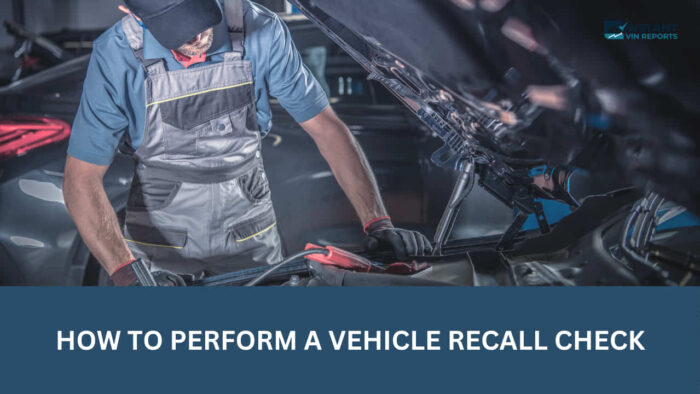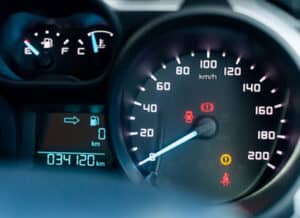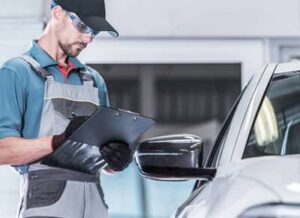For car buyers, sellers, and owners, vehicle recall checks have become an increasingly necessary action that must be taken at least two times a year. Today’s vehicles are designed and manufactured with high-tech machines and high safety standards, but still, millions of vehicles are recalled every year by manufacturers. A vehicle recall check reminds car owners just how safe they are while on the road. In this blog, we will be giving an up-to-date guide on how to perform a vehicle recall check to be sure of your safety and the safety of other road users.
What is a vehicle recall?
A vehicle recall is issued when a vehicle’s part doesn’t meet safety standards and requirements. These recalls are made when the vehicle fails to meet a certain safety standard and poses certain risks, and they are open to the general public. When a vehicle recall is issued by the manufacturer, it means all manufactured cars of a particular brand and model have to be taken back to the manufacturer for modifications.
These safety recalls may be issued for any car part, from tires to seats to mechanical parts and equipment, among others. When a vehicle recall is issued for a particular vehicle, it means a certain car part has failed to meet safety standards and must be fixed. Don’t panic; this process is usually free. All you need to do is follow the manufacturer’s instructions and schedule an appointment with a dealer.
Will I be notified if there’s a recall on my car?
After a recall has been issued, car owners will most likely receive mail from the manufacturer within 60 days. Upon receipt of the mail, car owners are expected to make their vehicles available for repairs and fixes. If you purchased a used vehicle and are registered with the manufacturer, you may likely get a mail to notify you of recalls.
If you are unaware of any recalls, it is recommended that you carry out a vehicle recall check twice every year to check out any recalls that you may have missed and get your vehicle repaired and fixed to improve your safety and the safety of all road users.
ALSO READ: Common mistakes to avoid when buying a car in 2023
How to perform a vehicle recall check
A vehicle recall check is a service provided by government agencies and vehicle history services. They have access to several databases and can easily identify vehicle recalls and inform car owners about their vehicle’s recall status.
If you are a car buyer interested in purchasing a used vehicle, it is important to browse through the vehicle’s history and information before committing to a purchase. One of the most important details you should consider when buying a vehicle is safety. With the vehicle recall check tool provided by Instant VIN Reports, you may easily gain access to open recalls on a vehicle and be fully informed of the vehicle’s recall history.
To perform a vehicle recall check and identify your vehicle’s safety issues, pay attention to the steps below:
Step 1: Locate your VIN
The Vehicle Identification Number is a unique 17-character (or less) code that is assigned to every vehicle during manufacture. This code is usually a string of letters and numbers that identifies a vehicle and can be used to gain access to important vehicle information and history. The information accessible with a VIN through a VIN check tool includes:
- Accident history.
- Damage history.
- Vehicle recalls.
- Vehicle specifications.
- Odometer records.
- Service history.
- Ownership history.
- Maintenance history, and more.
The Vehicle Identification Number can be found on several car locations and documents. Some of the most common are:
- The dashboard.
- The driver’s side door jamb.
- The engine block.
- The driver’s side door frame.
- The certificate of title.
- Vehicle registration documents.
- Insurance documents, and more.
After locating the VIN on a vehicle, you can proceed to the next step.
ALSO READ: Is it easy to fake a VIN number? What you Need to Know!
Step 2: Locate an online vehicle recall check tool
There are two vehicle recall check tools we can recommend:
- The vehicle recall check tool provided by Instant VIN Reports.
- The NHTSA vehicle recall check tool.
The Instant VIN Reports vehicle recall check tool
The Instant VIN Reports vehicle recall check tool is a tool that decodes a VIN and identifies both the current vehicle recalls on your vehicle and provides records of previous vehicle recalls. With the Instant VIN Reports vehicle recall check tool, you can be assured that every piece of information is provided with high accuracy. After a successful check with the vehicle recall tool, car buyers, owners, and sellers would be provided with
The recall date.
A description of the safety issue.
Consequences of the safety issue.
Remedy.
Vehicle components affected.
Recall number.
Affected units.
manufacturer’s recall number, and more.
The NHTSA vehicle recall check tool
If you want to check vehicle recalls for free, we would recommend using the NHTSA vehicle recall tool. It is a tool provided by the National Highway Safety and Traffic Association to check if vehicles have open recalls. With this tool, you can check the current open recalls on your vehicle, the consequences of these safety issues, and the recommended remedies.
Step 3: Search for open recalls
After identifying your preferred vehicle recall check tool, provide your VIN and any other necessary information, and search for open recalls.
Step 4: Contact your manufacturer or dealer
After identifying the safety issues, reach out to your manufacturer or dealer to schedule an appointment and get your vehicle repaired.
Repairs made to your vehicle after a vehicle recall are usually offered for free to vehicle owners. So endeavor to give a quick response whenever you notice an open recall because you just may be saving a life.
Can you drive a recalled car?
Driving a recalled vehicle depends on the manufacturer just as much as it depends on you. If the observed safety issue makes driving a safety hazard, then a vehicle recall may come with a “Do Not Drive” warning. For example, it’s not advisable to drive a vehicle with an open recall on faulty brakes. Usually, when the safety issue doesn’t come with a “Do Not Drive” warning and is not a life-threatening one, like a vehicle recall on wipers, then you may freely drive your vehicle until it’s time for an appointment with a dealer for repairs.










